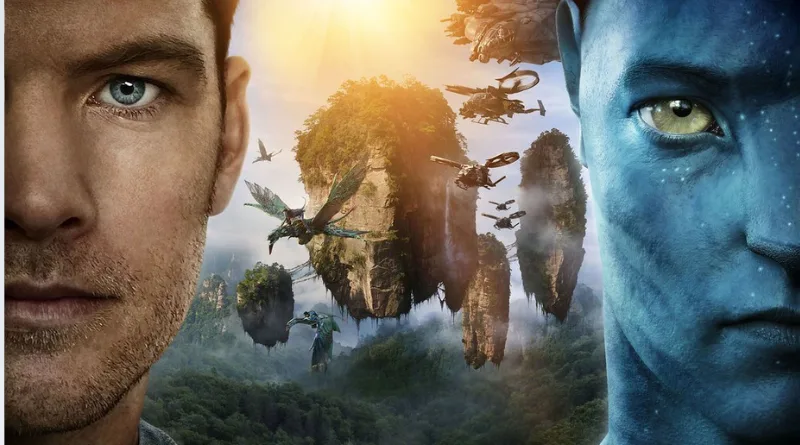Is Avatar 3 the best film in cinematic history or just empty propaganda?

The Avatar film series is an epic science fiction film franchise created by acclaimed director James Cameron. The series began with the 2009 film of the same name, which achieved massive global success, becoming one of the highest-grossing films in cinematic history.
Avatar movie story
The film series takes place in the mid-22nd century on the planet Pandora, a habitable moon teeming with rich and unique wildlife.
The main conflict in the films is between the indigenous Na’vi people, giant blue creatures who live in harmony with Pandora’s natural environment, and humans arriving from Earth via the Resource Development Corporation (RDA), who seek to colonize the planet and plunder its precious natural resources.
The title of the series, “Avatar,” refers to the genetically modified bodies of the Na’vi, which are remotely controlled by humans, including the character Jake Sully, enabling them to interact with Pandora’s environment and its inhabitants. Although each film in the series tells a standalone story, there is an overarching narrative that connects all parts to create a cohesive and comprehensive saga, exploring themes such as the environment, colonialism, identity, and spirituality. Join us as we explore “Avatar 3” through the following sections.
What We Know About Avatar 3
The third installment in the series is tentatively titled “Avatar: Fire and Ashes.”
Release Date
“Avatar 3” is scheduled to hit theaters worldwide on December 19, 2025. The release date has been postponed several times over the years for various reasons, including the COVID-19 pandemic and Hollywood strikes, but the current date is stable.
Expected Story and New Details
Continuity: The film will continue the events of the second installment, “Avatar: The Way of Water.” Jake Sully and his family will continue to face new challenges and conflicts with the Resource Development Corporation (RDA).
New Na’vi Clan: The film will reveal new Na’vi clans, including the “People of Ashes,” who are described as more warlike. This suggests we may see different and unexpected sides of the Na’vi people.
New Locations: The story will cover multiple locations on Pandora, including oceans, skies, forests, and mountains, promising stunning visual diversity, as is typical of the Avatar films.
Character Loss: One report indicates that the film will address the loss of one of Jake Sully and Nehitiri’s children.
Duration:
Director James Cameron has stated that Avatar 3 will be slightly longer than the second film, which ran for three hours and twelve minutes. James Cameron is known for his epic, feature-length films, which underscores his desire to deliver a deep and detailed story.
Cast and Crew
The film is directed and produced by James Cameron, who also co-wrote the screenplay. The main cast includes:
- Sam Worthington as Jake Sully
- Zoe Saldana as Nehtiri
- Sigourney Weaver as Kerry
- Stephen Lang as Colonel Miles Quaritch
In addition to other actors such as Kate Winslet, David Thewlis, and Oona Chaplin.

Techniques and Visual Effects
As with the previous installments, “Avatar 3” is expected to be a breakthrough in visual effects and cinematic techniques, particularly with the use of underwater filming techniques that characterized the second installment.
The Evolution of Filmmaking and Visual Effects Techniques in the Avatar Film Series
The Avatar film series is a milestone in the history of visual effects and the evolution of cinematography techniques. The most notable developments are:
Avatar (2009): The Revolution of 3D Cinematography and Motion Capture
Virtual Camera System: Avatar pioneered the use of this system. This system allowed director James Cameron to see the digital world and digital faces in real time during filming, as if he were filming on a real location. This gave him unprecedented control over the actors’ performances within digital environments.
Motion Capture (MoCap) and Performance Capture Technology:
Full Body Motion Capture: Special suits equipped with reflective markers were used to record the actors’ movements with extreme precision.
Facial Expression Capture: Complex systems were developed to capture the subtlest facial expressions of the actors, including eye, lip, and small muscle movements, and transfer them to the digital Navi characters in a highly realistic and impactful manner. This allowed the actors to fully embody their roles while preserving the details of their performances.
Stereoscopic 3D: Avatar wasn’t the first 3D film, but it was the film that revitalized this technology and made it a widely accepted, immersive cinematic experience, thanks to its high quality and attention to detail in world-building.
Simulcam: This system allowed live performance footage of actors to be combined with computer-generated (CGI) environments and characters in real time on the director’s screen, providing an immediate view of the final scene and assisting in directorial decisions.
Avatar: The Way of Water (2022): Conquering the Underwater World
In Avatar, Cameron overcame previous technical challenges and focused on filming underwater performances, something many considered impossible.
Underwater Motion Capture:
The biggest challenge was developing a system that accurately captured motion underwater, where light and motion signals are significantly affected. In collaboration with leading visual effects company Wētā FX, the production team created massive water tanks (larger than an Olympic-sized swimming pool) equipped with specialized infrared cameras and sensors to capture the actors’ performances as they dived and moved underwater.
This required the development of new software and hardware to address light refraction and motion distortion underwater.
Deep X 3D:
A new camera system developed by Paul Ashtell specifically for underwater 3D filming. This system uses submersible lenses designed to minimize water distortion while maintaining image clarity and depth.
Water Simulation:
Realistically rendering water, especially dynamic water (such as waves and spray), is one of the most difficult visual effects challenges. In ” Avatar: The Way of Water” the Wētā FX team reached unprecedented levels of water simulation, making underwater and surface scenes look stunningly realistic.
High Frame Rate (HFR):
The film was shot and displayed at 48 frames per second (rather than the usual 24 frames per second) in certain scenes, particularly fast-moving ones, to reduce motion blur and increase clarity and realism, resulting in a smoother and more interactive viewing experience.
In short
The technology has evolved from creating an elaborate digital world and realistic digital characters in the first film, to mastering underwater photography and complex aquatic simulations in the second film, setting new standards for what is possible in cinema.
Also read:
- should-you-buy-bitcoin-now-or-is-it-too-late-in-2025
- the-age-of-ai-agents
- a-leak-reveals-the-iphone-17s-battery-capacity-predicting-radical-changes
- samsung-unveils-its-thinnest-phone-the-galaxy-z-fold-7


